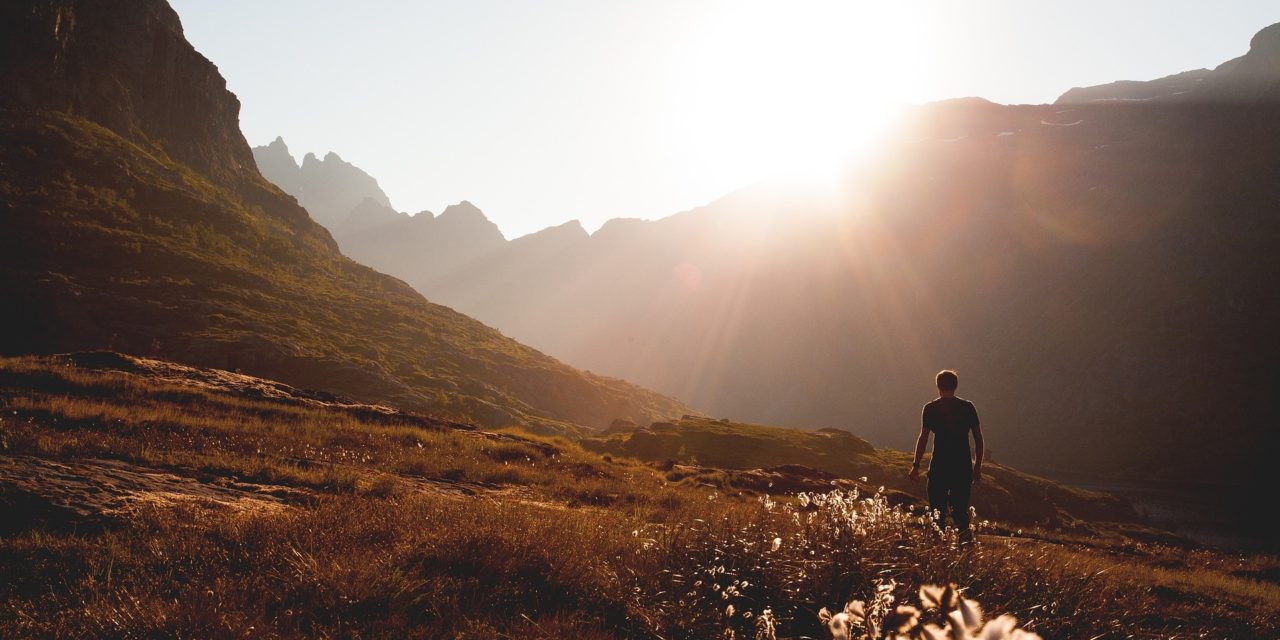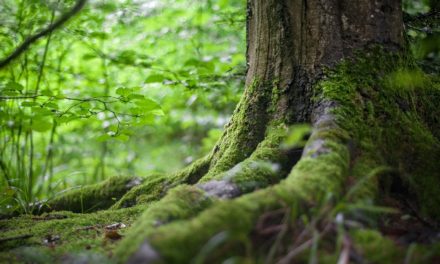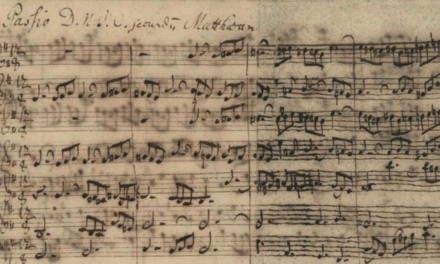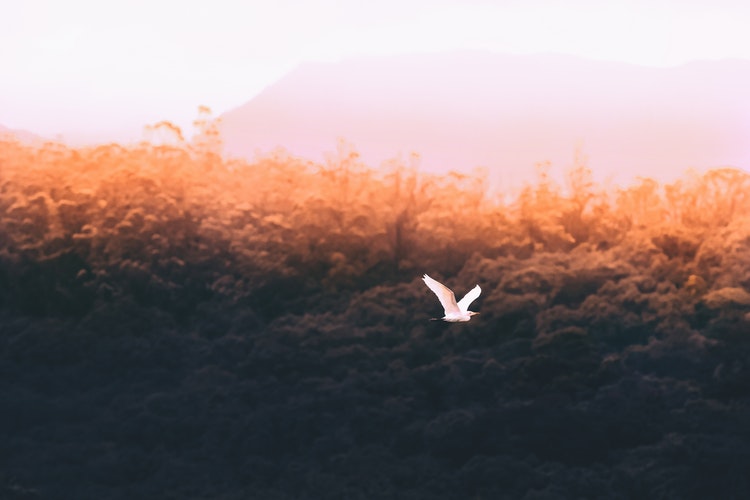“Heaven and earth have the same root, myriad things are one body.” Sengzhao
I pause at the junction where the Crawford Path joins the Appalachian Trail after winding up along Gibbs Creek from the Notch. Straight ahead, Mount Washington presents itself to me, massive and unmoving.
Many of us hike for views like this, regardless of whether we summit. We seek grand vistas—and photographs of them—as a reward for our pilgrimages into nature. Anticipating the view, we may feel excitement as we start to emerge above tree line. When we step out of the trees and look out over the krummholz, our spirits get lifted by the expanse, or we feel disappointed to find the peak shrouded in fog.
Out on the trail, however, some of the most powerful visions are not across a rugged landscape, and to experience them we don’t need to reach a summit or possess youthful courage (or risky stupidity). Nor do we have to drive—or fly—long distances to trailheads. These visions can be achieved closer to home. If Emerson’s Oversoul permeates all things, qi moves through all of nature, and kami are scattered across the landscape (or, better yet, life-scape), can I sense these facts in the old oak lording over the saplings in the woods on Palfrey Hill above my semi-urban neighborhood? Do I need to climb remote mountains to trigger the mysterium tremendum?
As a boy the Buddha got a foretaste of enlightenment while sitting under a rose apple tree watching his father plow a field. Later in life his great awakening happened on the edge of a village, not up in a cave on the side of a Himalayan peak (even though Zen artists portray him as “descending the mountain” after his enlightenment experience). His preferred lecture hall was not a backcountry tent site or base camp beside a glacier but a manicured garden.
Simply put, remote wilderness is not required for religious experiences. The rocky spot where Allah spoke to Muhammad overlooked the crossroad markets of Mecca. Bernadette was out collecting firewood with two other girls on the edge of Lourdes when she saw the lady in white. Buddha was sitting under a tree near a village in northern India when he broke free from suffering. St. Francis was in the chapel of San Damiano near Assisi when he saw Christ, and Julian had her visions while mortared off in a cell on the outside wall of the cathedral in Norwich.

But impactful encounters and visions, whether in the wild or on the edge of human habitation, are not the last word in transformative experiences. Subtler vistas open up all the time on the trail. The approach to hiking I’ve been sketching here helps us cultivate a way of paying attention, of being in the woods, that diverges from the desire to prove something or add a summit to our list of exploits. It’s about emptying ourselves of our drivenness and simply giving our attention to the act of walking and the place through which we move. Though we get sweaty, dirty, and covered with DEET, we are cleansing ourselves internally, and this, in turn, clears our sight.
The process of mental quieting may take a while. Few of us can set foot onto a trail and immediately stop thinking about things back home. Worries tag along, like lampreys on the side of a shark. But gravity helps. Pack straps wedge into our trapezius muscles. Knees start to ache. Sweat runs down our forehead. Not unlike seated meditation, hiking compels us to enter the raw physicality of what we’re doing. True, we may start obsessing about a blister on a heel or soreness in a knee, but we keep walking. Step, step, bug, step, wipe sweat, step, stub toe on rock, step again, stiff quad, step, shoulder strap, step, thirst, step, step. A mile or two up the trail, pack straps adjusted, muscles warmed up, a rhythm usually sets in. Our breath settles. Barring severe pain or resistance to being out on the hike in the first place, our mouths quiet down. As—or if—we stop talking with others in our group, our inner chatter dissipates, too. We start to attend more to the roots undulating across the trail and the way the sun hits our forehead. Challenges along the path sharpen our attention—a boulder to scamper over, mud to step around, a stream to cross on slick rocks. In this way the quality of our focus shifts, from fixating on thoughts and worries to paying attention to what’s happening around us.
Basically, our mind is getting emptied. What may open up is a calm, attentive awareness, free from obsessive thinking and worrying. And when thoughts do arise, they pass through us like how a cloud, a bird, or a falling star passes through the sky. We can call this awareness “empty-sky mind.” In Japanese, the character for “emptiness” is also the character for “sky” (空) and Buddhism is replete with metaphors about clouds drifting unimpeded across a vast blue sky.
Zen sometimes refers to this sky mind as “no mind” (mushin), an awareness that is there in the background while our thinking scurries about, latching on to things, like a monkey in a fruit tree. Shunryu Suzuki called it big mind, transcending our small mind of analyzing, judging, and worrying. Others have termed it mirror mind, insofar as it perceives things clearly and doesn’t react.

As backpackers know, when spending extended time in the wilderness, our minds get progressively emptied and this big sky mind opens up. With our normal frenetic consciousness quieted down, we pay better attention—without even “efforting” to do so. We notice things more vividly. Tiny heather flowers. Yucca jutting out on the lower slopes of San Gorgonio. The insistent drumming of a red-bellied woodpecker on Stratton Mountain. A pile of grizzly shit east of Athabasca. The buzz of the cicada starts to pierce us, like it did to Bashō on his trail:
Silence.
The buzz of the cicadas
penetrates the rocks.
In one respect, when our minds get emptied, we get filled by whatever we experience. As Dōgen famously put it, “To learn the self is to forget the self; to forget the self is to be confirmed by the ten-thousand things.” There is no felt sense of being apart from the sunset, the sound of a warbler, the smell of mud emerging through the spring thaw. Though it usually lasts only for a moment and no words can capture it, we might be inclined to exclaim, “In that moment, I was the sunset and the sunset was me.” This experience is what Dōgen calls “the dropping off of mind and body.”
In more philosophical terms, it is the dissolution of the separation between ourselves and what we experience, between subject and object. In such moments it is not me and the blazing sky, me and the call of the songbird, but just the sunset, just the birdcall. Though the experience may be mediated at a preconscious level by concepts, in that moment of experience there is no sense of “me” apart from any of those things, but simply the raw, immediate experience. It is no longer the case that we are having an experience of those things but we are the experience, we are those things as they happen in the moment. As Thich Nhat Hanh puts it, “If you are a mountain climber or someone who enjoys the countryside, or the green forest, you know that the forests are our lungs outside of our bodies. . . . We should be able to be our true self. That means we should be able to be the river, we should be able to be the forest. . . . That is the nondualistic way of seeing.”
 We may even realize that we are part of the interconnected web of life, that “I” am nature doing its thing through me, as me. I am one temporary configuration in the field of energy called nature. To shift metaphors, I am a wave in a vast ocean of energy, and while on retreat in the woods, I may realize that I am inseparable from that unified expanse of water, even as I take my particular form as one wave, one upwelling of that whole. Though I normally think of myself as a separate entity, as an autonomous wave, I am actually a water-as-wave wave. I am me—but not me in the way I think of myself in normal egocentricity. We discern nonduality: not two and not one. Not two: I am not apart from the unified field of energy. Not one: I am not fused with it in a way that erases my particularity. In terms of the famous line in the Heart Sutra, “form is emptiness”: I realize the ocean of energy of which I am part. And “emptiness is form”: that ocean exists only as formed waves, as particular forms like me.
We may even realize that we are part of the interconnected web of life, that “I” am nature doing its thing through me, as me. I am one temporary configuration in the field of energy called nature. To shift metaphors, I am a wave in a vast ocean of energy, and while on retreat in the woods, I may realize that I am inseparable from that unified expanse of water, even as I take my particular form as one wave, one upwelling of that whole. Though I normally think of myself as a separate entity, as an autonomous wave, I am actually a water-as-wave wave. I am me—but not me in the way I think of myself in normal egocentricity. We discern nonduality: not two and not one. Not two: I am not apart from the unified field of energy. Not one: I am not fused with it in a way that erases my particularity. In terms of the famous line in the Heart Sutra, “form is emptiness”: I realize the ocean of energy of which I am part. And “emptiness is form”: that ocean exists only as formed waves, as particular forms like me.
On the trail, as our minds get emptied and our senses get tuned— perhaps with a good dose of endorphins—we also start to see things more clearly. With our analytical mind quieted, no longer reaching out to things and in effect grabbing on to them, things come to us. With our minds like a mirror rather than a hook, things appear to us, doing their thing, “self-so,” in what Buddhists call their “such-ness.” In Dōgen’s parlance, we experience genjō kōan: the immediate presencing of each thing. In its exuberant flowering, leafing, gurgling, scatting, or chirping, each thing is manifesting itself in its distinctiveness. Mount Rainier rises up above the wildflowers in Spray Park. A leopard slug leaves a veneer of slime along a wet nurse log. A dry canyonland of bark extends up along the trunk of a Douglas fir. Here in the Whites, alpine heather reaches out with delicate mauve flowers.
To experience things fully as they present themselves in their suchness is not to see them as symbolizing something. Granted, Japanese Buddhist poetry is replete with associations between pine trees and longevity, bamboo and flexibility, cherry blossoms and transient beauty. But Dōgen is trying to lead us out of thinking and into direct contact with the raw givenness of things. Hemlock branches weighed down with globs of snow, dripping in the afternoon sun. Petals of silver light flickering on lake ripples. The underbellies of poplar leaves fluttering in the breeze. And we do not feel separate.
Walking in nature thus gives us a different sense of self. The Australian environmental activist John Seed once said, “I am that part of the rain forest recently emerged into thinking.” Today on the trail I am nature doing its thing in me, through me, as me.

Excerpted from Zen On The Trail: Hiking As Pilgrimage by Christopher Ives, with permission of Wisdom Publications.







Yes to all of this. But I would like to add that hiking in the city also has it’s enlightenment moments. I call those moments “deep hum moments” and have written about them on my blog post Finding the Deep Hum.
“So often the places we seek for spiritual renewal – places where we feel the hum – are in the woods, in “nature.” We leave our urban homes to go seek these spiritual places.
But we humans are also a part of nature. Where we are can also be “places that hum.””…
“How about when you stop and look right at a homeless person and ask them how they are and they reply, “I be blessed,” and suddenly you feel connected to the whole universe.” See my post at http://deephum.com/finding-the-deep-hum/.
thank you for your thoughtful and inspiring reminder that nature is where we began and to whom we belong.